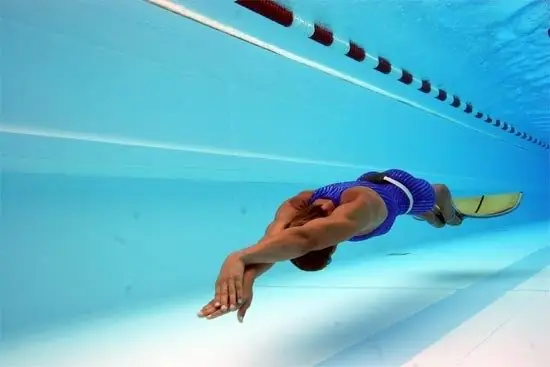- Author Nora Macey [email protected].
- Public 2023-12-16 10:17.
- Last modified 2025-01-23 08:47.
A person usually learns to swim in childhood, so adults who cannot swim often have learning problems. After all, if you have not learned before, now it will be much more difficult. Do not despair and think that this is an impossible task before you.

Instructions
Step 1
Let the person get used to the water. Often, adults experience panic before water and swimming, which is not so easy to overcome. If your ward is completely unable to stay on the water and is afraid of drowning, the first stages of training should be spent on getting used to the water. Go with a student to a shallow depth and invite him to walk on the water, squat in it and swim, resting his hands on the bottom. Such activities teach a person to be in the water without fear, help to get comfortable with its density and how his own body behaves. After the fear of water disappears, you can begin further training.
Step 2
Use special non-sinking boards made of plastic, foam or wood for training. You can buy one at a sports store or make it yourself. First, teach your student to walk in the water using their feet, holding the board with both hands. In this case, the position of the body is as close as possible to the natural position when swimming. At first, your ward will just flounder, trying to stay afloat, but soon he will be able to hold on without difficulty and he will be able to start moving in the water due to the strength of his legs. When this trick is mastered, invite the student to hold on to the board with one hand and stroke with the other. This is usually much more difficult than holding the board evenly with both hands, and soon your student will find it much easier to try to swim without support at all.
Step 3
Once you have acquired your primary swimming skills, move on to more serious exercises. Choose a deep place to swim immediately after the student is in the water. A ladder bridge or a small dock is ideal for this. Jump into the water first and back up your student. Then everything is simple: the student himself throws a life buoy into the water (at the distance that seems comfortable to him) and jumps after him. The task is to swim to the circle and return to the shore. Monitor your student closely and adjust the distance to the life buoy if necessary. After a series of exercises, the circle should be thrown further into the water to increase the total distance for swimming.






